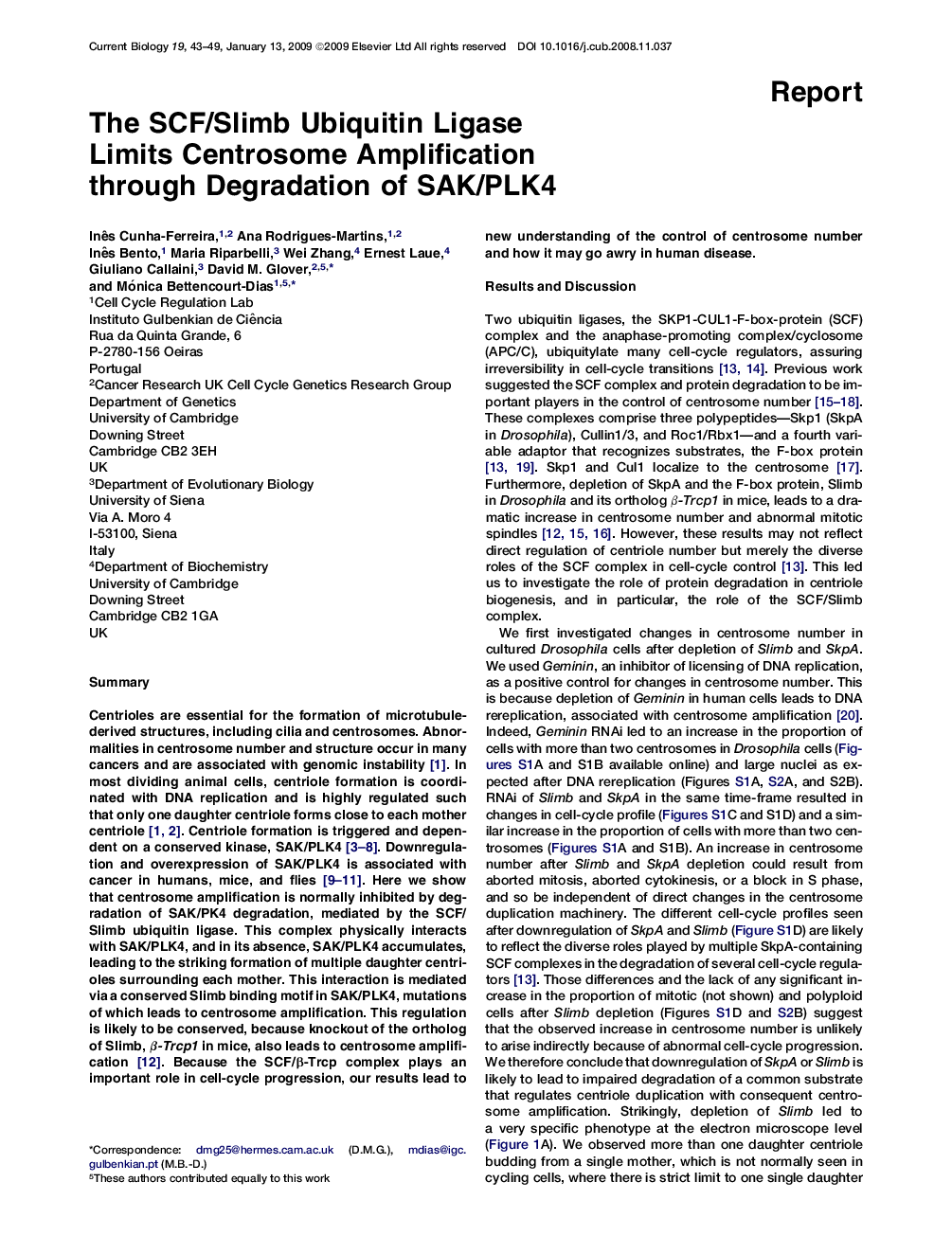| کد مقاله | کد نشریه | سال انتشار | مقاله انگلیسی | نسخه تمام متن |
|---|---|---|---|---|
| 2043658 | 1073372 | 2009 | 7 صفحه PDF | دانلود رایگان |

SummaryCentrioles are essential for the formation of microtubule-derived structures, including cilia and centrosomes. Abnormalities in centrosome number and structure occur in many cancers and are associated with genomic instability [1]. In most dividing animal cells, centriole formation is coordinated with DNA replication and is highly regulated such that only one daughter centriole forms close to each mother centriole 1 and 2. Centriole formation is triggered and dependent on a conserved kinase, SAK/PLK4 3, 4, 5, 6, 7 and 8. Downregulation and overexpression of SAK/PLK4 is associated with cancer in humans, mice, and flies 9, 10 and 11. Here we show that centrosome amplification is normally inhibited by degradation of SAK/PK4 degradation, mediated by the SCF/Slimb ubiquitin ligase. This complex physically interacts with SAK/PLK4, and in its absence, SAK/PLK4 accumulates, leading to the striking formation of multiple daughter centrioles surrounding each mother. This interaction is mediated via a conserved Slimb binding motif in SAK/PLK4, mutations of which leads to centrosome amplification. This regulation is likely to be conserved, because knockout of the ortholog of Slimb, β-Trcp1 in mice, also leads to centrosome amplification [12]. Because the SCF/β-Trcp complex plays an important role in cell-cycle progression, our results lead to new understanding of the control of centrosome number and how it may go awry in human disease.
Journal: - Volume 19, Issue 1, 13 January 2009, Pages 43–49